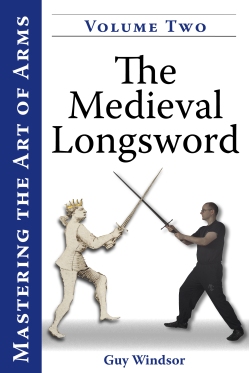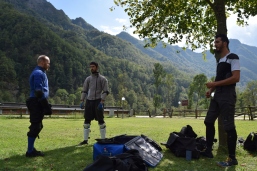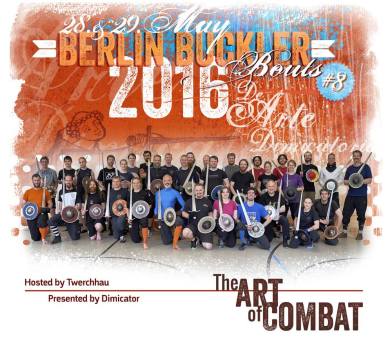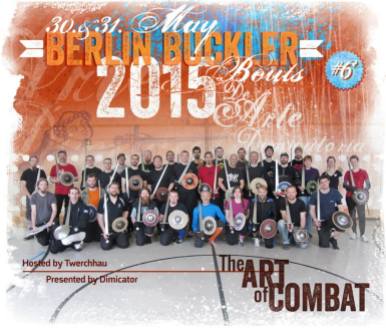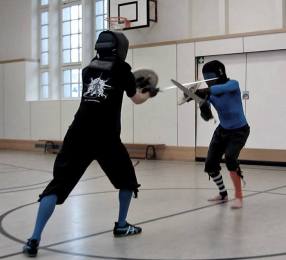For the english translation scroll down.
Parto dicendovi che non è il primo libro di arti marziali che leggo, eppure questo libro mi ha dato l’idea di creare questa sezione di recensioni, questo perché mi ha profondamente colpito.
Mi sono accostato a Fiore de Liberi dal punto di vista accademico diverse volte in questi quattro anni, ovviamente come per ogni cosa “ludica” e poco costante non ne ho mai ottenuto alcun risultato. Questo libro, Mastering the Art of Arms, Volume 2 – The Medieval Longsword, mi ha aperto un mondo. Se Fiore ha creato un capolavoro creando il suo sistema di combattimento articolato, Guy Windsor è di certo riuscito a trasmetterne una buona parte in poco più di 200 pagine. Ritengo la cosa degna di entusiasmo per vari motivi:
Tra questi motivi vi sono i capitoli da I a IV. Questi capitoli contengono un excursus attraverso le “Basi” della scherma, le basi sono in realtà ciò che fa grande un artista marziale, più la sua conoscenza di queste è marcata, più le sue capacità aumentano in modo esponenziale. In questi quattro capitoli, Guy ci spiega come, attraverso esempi, citazioni, fotografie e attraverso le sue conoscenze, come destreggiarci con la postura e l’equilibrio (direttamente legati tra loro) il passeggio, i concetti di misura, tempo, legamento e flusso. Ci indica con quali criteri scegliere una spada blunt per dedicarci allo studio di Fiore e ci da delle linee guida sull’equipaggiamento difensivo, basandosi sulle sue esperienze dirette. C’è molto altro, molte sottosezioni che ho apprezzato infinitamente, quella che preferisco e che mi ha dato davvero molto, è quella riguardante la divisione concettuale tra Zhogo largo e Zhogo stretto, seguita subito dopo da “COME IMPUGNARE LA SPADA” (chi mi conosce sa quanto tengo a questo particolare).
Il quarto capitolo è il mezzo che ci avvia alla parte del libro dedicata alle tecniche di Fiore, una serie di ottimi esercizi (sempre attuali, sempre importati indipendentemente dalle capacità tecniche) ci guida attraverso l’armeggio.
Dopo questa preparazione, l’allievo è introdotto alle tecniche di Fiore, vi sono ben cinque capitoli che alternano inizialmente una presentazione graduale di colpi e poste, alla presentazione delle tecniche correlate alle sopracitate. Avanzando, si passa alla presentazione di cose più particolari e articolati (come il “calcio alle noccioline” eheh) passando anche per il gioco stretto, le leve articolari, la presentazione di alcuni Drill specifici e un’analisi tattica delle guardie (altro punto che nello specifico ho apprezzato molto).
Gli ultimi capitoli sono un avviamento allo sparring con ottimi consigli su come approcciarsi ad esso in modo sicuro e costruttivo (vi sono alcuni drill aggiuntivi ottimi per condizionare i movimenti in sparring), comprende molti consigli riguardo a “cosa non fare” oltre a ciò che è da farsi. Questo è veramente importante perché spesso lo sparring è travisato e diventa più una simulazione di torneo sportivo.
Mi fermo qui, rileggendo l’articolo mi accorgo di quanto poco ho potuto citare dei contenuti del libro, questo è proprio per via della moltitudine di ottimi insegnamenti e spunti che vi potrete trovare all’interno.
Questo libro ha modificato molti punti del mio metodo di insegnamento, lo trovo quindi uno strumento molto buono per chi si avvicina alle arti marziali europee, ancor di più se possibile per un istruttore che, come me, sta costruendo le sue capacità di insegnamento.
– Federico
I start by telling you that it is not the first book I read of martial arts, but this book gave me the idea to create this section for reviews, this is because I was deeply impressed by it.
I approached Fiore de Liberi from the academic point of view several times in the past four years, of course, as with everything “playful” and not very consistent I’ve never gotten any results. This book, Mastering the Art of Arms, Volume 2 – The Medieval Longsword, has opened a world. If Fiore has created a masterpiece by creating its combat system articulated, Guy Windsor has certainly managed to transmit a large part in just over 200 pages. I think this thing is worthy of enthusiasm for several reasons:
Among these reasons are the chapters I to IV. These chapters provide a survey of the “basics” of fencing, the basics are actually what makes great a martial artist, plus his knowledge of these is greater, the more its capacity increase exponentially. In these four chapters, Guy explains, through examples, quotations, photographs and through his knowledge, how to move through posture and balance (directly related to each other), the walking, the concepts of measurement, tempo, binds and flow . Shows us how to chose and buy the first blunt sword to dedicate ourselves to the study of Fiore and gives us guidelines on defensive equipment, based on his experiences. There is much more, many subsections that I really appreciated, the one I prefer and that really gave me a lot, is that concerning the conceptual division between Zhogo largo and Zhogo stretto, followed soon after by “handling the sword”.
The fourth chapter is the means by which we start the part of the book devoted to the techniques of Fiore, a series of good exercises (always usefull regardless of technical ability) guides us through the basics for handling the sword and for striking in a good way.
After this preparation, the student is introduced to the techniques of Fiore, there are five chapters that alternate initially a gradual presentation of blows and Poste, and the techniques related to them. Advancing, you switch to the presentation of more special and articulated things (such as the “Kick to the nuts” hehe) going for the Stretto, the levers, the presentation of some specific drill and tactical analysis of the guards (another point that specifically I enjoyed).
The last chapters are an introduction to sparring with great advices on how to approach it in a safe and constructive way (there are some additional excellent drill to influence the movements in sparring), includes many tips about “what not to do” and what is to be done. This is really important because often sparring is distorted and becomes a simulation of sports tournament.
I’ll stop here, re-reading the article, I realize how little I could quote about the contents of the book, this is precisely because of the multitude of excellent teachings and ideas that you can find inside.
This book has modified several parts of my teaching method, so I find it a very good tool for those approaching the European martial arts, even more if possible for an instructor who, like me, is building his teaching skills.
Federico.

